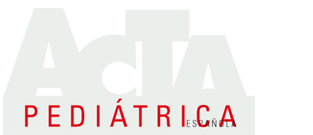Resumen
Introducción: Los niños con neumopatías crónicas presentan más morbilidad que los pretérmino si se sobreinfectan por el virus respiratorio sincitial (VRS) y, en algunas ocasiones, podrían beneficiarse de la profilaxis, incluso más que los niños con cardiopatías. El objetivo de este estudio era describir las características y la tasa de hospitalización por VRS en pacientes pediátricos con neumopatía crónica que habían recibido profilaxis con palivizumab (PVZ).
Material y métodos: Se realizó un estudio retrospectivo en pacientes con neumopatía de base que habían recibido profilaxis con PVZ en el periodo 2011-2012.
Resultados: De los 74 pacientes incluidos, el 55% eran niños. La edad media al inicio de la profilaxis en esta estación fue de 15,7 ± 13,8 meses. El 69% (51/74) recibieron profilaxis completa y el 31% (23/74) incompleta. Ningún paciente interrumpió la profilaxis por presentar reacciones adversas. La media de dosis administradas fue de 4,7 ± 0,8. El 27% (20/74) presentó, como mínimo, una reagudización respiratoria aguda y el 6,7% (5/74) un segundo episodio. En 2 pacientes el agente infeccioso responsable fue el VRS, y en 18 otros agentes. Los 2 pacientes con infección por el VRS requirieron ingreso hospitalario, y el 45,5% (8/18) de los pacientes del grupo afectado por otros agentes. La tasa global de hospitalización por infección por el VRS en la muestra de estudio fue del 2,7%.
Conclusiones: La tasa de hospitalización en nuestro estudio fue similar a la obtenida en otros realizados en pacientes con otras patologías de base a los que se les había administrado profilaxis con PVZ, lo que puede sugerir un efecto beneficioso en pacientes con neumopatías de base.














